
38 minute read
The Healing Practitioner
Meet Melbourne based Vanita Sharma, an authentic traditional Ayurvedic and Yoga practitioner, winner of IABCA 2018 Business Woman of the Year award to 2019 Woman Entrepreneur; not only lived to tell a near-death experience but encompassing nature, human body and seeking ways of healing the mankind or all three.

Advertisement
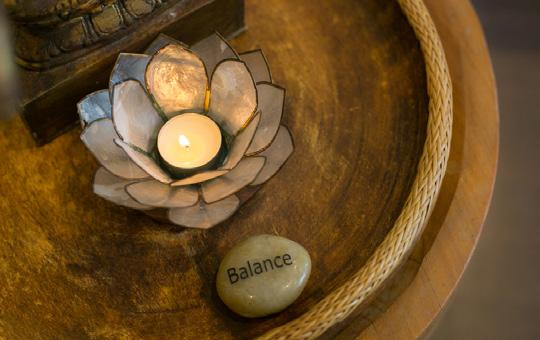
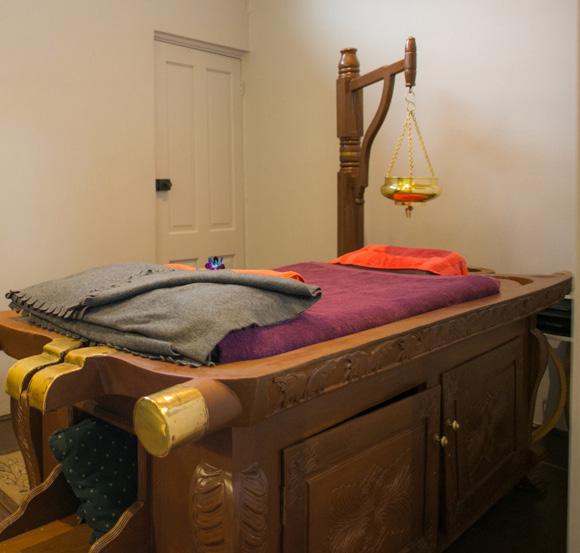
Asecond chance in 2008 changed the course of life for Vanita, travelling to India with her then sixyear-old son to attend her cousin’s wedding in New Delhi and also travel to Jaipur for business. Just within a week of arriving in India she met with a horrific accident - her car a complete write off after being hit by a truck.
Being in a coma she had no idea she survived an accident that left her with a frontal lobe brain injury and cut on her face. Although she had no memory loss but was without work for nearly three years as she was unable to attend to her clients to practice, once arriving back in Melbourne. Vanita says, “I lost hope and thought I’m done.”
They say angels come in many forms and in Vanita’s case, it was her brother, a practising GP in the UK, a successful doctor in his own rights and he too survived a road accident at the age of four. Although it was challenging, he decided to move to Melbourne, along with his family to support Vanita and her family.
In 2011, she gathered all her energy and inspired herself with a can-do attitude that she didn’t give up. Vanita started studying Entrepreneurship and Innovation in Swinburne, in the meanwhile she also started working from home, initially contacting her old clients. A television interview with ‘David & Kim Morning Show’ Channel Ten changed things for her, moving her business into a commercial place in Kew during 2014, building it again from scratch with family support. In 2016, Vanita got elected as a Vice President in the Ayurvedic Association and served for two years. In 2018 she got elected as a Deputy Chair, Complementary Health IRC, SkillsIQ to represent Ayurveda & other complementary health modalities.
Just recently in 2020, she had to undergo another eye surgery; and within four months her vision was restored that was impaired during the accident.
It was important to take a glimpse into her backstory before indulging straight to the interview as it enables us to understand the visionary doctor’s achievement in Ayurveda.
To initiate things off, could you tell us is Ayurveda an idea or a concept?
Ayurveda is a consciousness based approach to health, truly a science of life or experience that determines the quality of wellbeing evolving five thousand years ago. An ancient scripture Charaka Samhita, (Sutrasthana, first adhaya) has given a specific idea, a clear concept of human life, sharirindriya meaning: ‘Whenever human body is in combination with the consciousness (mind) then only one can call it a human life; whenever there is a separation between them it is death.”
The levels of these two are different, the material (physical) level, but the consciousness (mind) the metaphysical level, a sort of energetic level. Unless these two levels are taken into account, it is very difficult to maintain life at a normal level or to treat disease conditions. The concepts of universal interconnectedness, the body’s constitution (prakruti), life forces (doshas) are the primary basis of Ayurveda.
Being a fifth-generation Indian Integrative Ayurvedic Doctor, you bring the wealth of legacy and experience through your family’s practice in India. So how did Urja Ayurvedics in Melbourne (Australia), came to fruition?
A family background of physicians not only being inspired by her grandfather, but also having had the luxury of observing him doing ‘Pulse Analysis.’ Her involvement with it has been truly compelling as Vanita was fortunate to choose between conventional medicine and Ayurveda, but the love for nature was her unanimous approval for the latter. Vanita was amazed to see the lack of Ayurvedic practice in Melbourne, giving her a reason to be among the first to introduce Ayurveda in Melbourne, almost twenty-two years ago by the name of Vibe Ayurveda. Now ‘Urja Ayurvedics’ is a reflection of her, giving back to the community. ‘Urja’ meaning ‘energy’.
According to you, have the people in Australia (Southern Hemisphere) holistically grasped to the idea of Ayurveda yet?
According to Vanita, Australians have grasped the idea of Ayurveda within the field of holistic health and traditional Yoga. Complementing the conventional medicine, it is accepted as an Integrative Ayurveda, acting more as a preventative approach, focusing on nutrition, diet & lifestyle; widely practised and registered in SkillsIQ (national not for profit organising supporting industry) under complementary health Australia. Most recently an MOU has been signed between All India Institute of Ayurveda and Western Sydney University and an Ayurveda Chair is getting established in the University early next year for its recognition & propagation in Australia. It is all possible with the support of AYUSH Health Ministry and Indian High Commission and there are few private institutions in Australia who are providing Certificate level & Diploma level qualifications.
You single-handedly facilitated an international collaboration with Australia,


India, Europe, Brazil, North America, etc., through their respective Health ministries to promote Ayurveda, how did that come by?
As a Deputy Chair, Complementary Health IRC, (responsible for national training package qualification relevant to Ayurveda, and therapeutic industries) SkillsIQ, and an industry representative, Vanita, an independent Ayurveda practitioner in Melbourne facilitated and presented International Ayurveda Congresses globally.
She was part of these distinguished panel discussions with AYUSH Health Ministry to get Ayurveda recognised in Australia, propagate globally and in Brazil it was sponsored by the Brazil Health Ministry. Vanita facilitated and took proposal on request by the authorities to share the Australian learning programs, taking University delegates to Indian High Commission, Canberra to organise the establishment of Ayurveda Chair in Australia. She’s currently the co-chair for Yoga and Alternative Health Committee in the Asian African Chamber of Commerce and Industry representing to propagate AYUSH Sciences, especially Ayurveda from Australia and a Chair for Australasian Pacific Council of AYUSH Sciences.
How do you keep the teaching of Ayurveda fresh for generations to come, how do you keep the legacy going?
Along came Covid and its tribulations, such as homeschooling, kids constantly on their computers, lockdowns, and fast food trends affecting the future generation. Now more than ever, the need for Ayurveda has expanded. Creating awareness amongst the younger generation is critical- especially for the wellbeing of their mental health with the challenging changing times. Meditation and pranayama, assisting with their diet for a balanced lifestyle are only possible by educating, creating awareness in the kids through voluntary, virtual programs and assistance through consultation. This is how then the future generation will then understand Ayurveda and its importance in stress management. As a Secretary GHARS (Global Hindu Association for Reform and Sustainable Societies), Vanita contributes and supports diverse communities through various voluntary projects and events. “It’s her way of giving back to the community” and to make sure this legacy continues.
How do you source your products for your
business?
This is the wisdom and knowledge passed on over generations as a family legacy and secret. Urja being Vanita’s answer to energising - stronger immunity, strength, vitality to deal with catastrophes - Ayurveda is the answer to most problems. Vanita is determined to create a change, change happens when there are good intentions to transform, in this case it’s in abundance. Her in-depth knowledge of the human body connects her with the right supplement for example what to take during a common cold or even a suitable pranayama for breathing. Her range covers from turmeric to Ayurvedic honey, now selling on her website.
What is next for Dr Vanita Sharma?
Vanita’s recognition and awards in Ayurveda was all possible because of her family support, hard work and sacrifices made by the family. Always carrying her best wishes of her gurus, mentors, friends and of her parents, always inspiring her not to give up. Vanita says “These are not my awards.” Crediting the awards to the Ayurvedic fraternity, she feels proud for her birth country India, that she could continue this Indian legacy of Ayurveda in Australia. She feels privileged, honoured and blessed to receive recognitions but that doesn’t mean her work is done. She has many more humanitarian projects in progress in the near future and exciting ones!
Is there a book somewhere in the making?
We may anticipate a book and it may be soon.
What’s your prophecy about Ayurvedic practices?
“We don’t need sick and educated culture, we need healthy nations, health is not the source of wellbeing, wellbeing is the source of health.” We need to change our lifestyle and be able to understand what to eat, how to eat, how to sleep, how to breathe and how to live. Think beyond biological identity. Nature is not able to withdraw, only fittest will survive, rest anything physical, mechanical has to go.
There is a great reverence and admiration for Eastern Ayurvedic practices. It’s not a product of human intellect, it came from experience (mindset).
dimension of life.’’ Vanita’s mantra is for sustaining the future.
It was great speaking to someone like Dr
Vanita Sharma for sharing her alternative knowledge in science, Ayurveda but also for trying to make this world a better place. As she rightly says in her own words preserve and nurture this deeper dimension of life, I cannot help quoting the healing practitioner of Ayurveda herself “Universe supports
when you have good intentions.”

By Nandita Chakraborty

Parental responsibilities in blended families
BY
GURPAL SINGH
In the complex social structure of a present-day modern family, the concept of parental responsibility carries a curious look and require an unambiguous understanding from the perspective of expectations of the Family Law Act 1975. The parenting order confers parental responsibility for a child on a person to the extent of duties, powers, responsibilities, or authority in relation to the child. The law requires in substance, and so far, as it relevant that when making a parenting order in relation to a child, an application of rebuttable presumption that it is in the best interests of the child for the child’s parents to have equal shared parental responsibility for the child. This includes the child to have the benefit of both their parents having a meaningful involvement in their lives, to the maximum extent consistent with the best interests of the child.
Curious enough the issue of a child born because of artificial conception procedures while the woman was married to, or a de facto partner of another intending person, obviously with the consent of the other intending person for the artificial conception procedure, the child shall be a child of the woman and of the other intended parent.
The law warrants that a woman who is married to a man has undergone a fertilisation procedure as a result of which she becomes pregnant; the husband is presumed to be the father of any child born as a result of the pregnancy even if he did not provide any or all of the sperm used in the procedure, but only consented to such a procedure; and in case of the woman she will be the mother of the child as a result of such pregnancy even if she did not provide the ovum used in the procedure.

In an interesting High Court of Australia decision, section 60 H of the Family Law Act 1975 (Cth) was examined by the court. The court adopted a broader approach interpreting being a flexible and expanding in nature rather than restrictive and narrow. The court included the categories of the people who could be the child’s parents and that the definition was not exhaustive of the classes of the persons who could qualify as parents. The peculiar facts of the case included: Mr Mason was registered on the child’s birth certificate as a parent. Such registration satisfied the presumption of parentage under the law which arises from the name of the parent as recorded on a birth certificate, notwithstanding the fact that the presumption was rebuttable in law. Mr Mason gave his semen on the express or implied understanding that he would be the child’s parent. It was always understood that Mr Mason would care for the child financially and emotionally which he certainly did AND the child identified Mr Mason as a father and referred to him as ‘daddy’.

The court held that Mr Mason was the child’s parent in accordance with the ordinary meaning of the word or at least a person concerned with the care, welfare and development of the child. Curiously the full court of the Family Court of Australia held that Mr Masson could not be the legal parent of the child because of the interpretation of the child under the NSW laws which provided that if a man provided sperm for the purposes of artificial insemination to a woman to whom he was not married, it was presumed that he was not the father of the child.
The high court however held that the Family Law Act did not define the term ‘parent’ and ‘a court will not construe a provision in a way that departs from its natural and ordinary meaning unless it was clear that the Parliament intended it to have some different or restrictive meaning. Such an indication was not present in the interpretation of these definitions. The majority of the judges concluded that the definition of parent was not obscure or ambiguous or readily capable of more than one interpretation.

Mental Health – The invisible struggle and the visible stigma!
BY
KARTHIK ARASU
President of “Australia India Sports Council
No illness is to be ashamed about; let’s get that correct first.
Mental illness doesn’t discriminate. It affects people of every age, race, gender, wealth, status and religion.
Please take time and think for few minutes. Did you spend your last few weeks in any frustration, pressure, anxiety, or mental stress you couldn’t or wouldn’t want to share with anyone?
If your answer is yes, you can do one of two things; either you can bottle up and suffer or open up to your family, friends or anyone you are comfortable with and start seeing your burden reduce. Sorry for being direct, but if you don’t act on your troubles today, the impact will multiply and affect not just you but all your loved ones as well.
We generally brush things aside, particularly people from multicultural backgrounds; we assume talking about mental illness is a shame and connect with every wrong thing possible. Mental illness is like any other physical illness; unless we seek help, it will not cure.
How many times do we see someone struggle and don’t know how to respond? We are not trained to provide the cure, but we can certainly help them by listening or checking up on them. When you see someone suffering, just suggesting they seek help goes a long way when it comes to saving them.
Kerry Washington, a famous American actress, said, “I think it’s really important to take the stigma away from mental health… My brain and my heart are really important to me. I don’t know why I wouldn’t seek help to have those things be as healthy as my teeth?” We all know our brain and heart are the most valuable organs; why fill them with negativity and turn them into a wastebin? Instead of filling them with happy, positive thoughts. When you look after them, it becomes a cradle of energy not just for us but also for all around us.
I was reflecting on few things about my life (yes, age is catching up. I realised my most fights and anger was with the closest and dear ones. Some arguments I can’t even recall the reason, but still, the anger and hurt linger. We value small things critically and lose vital things in our life; I have lost many in such a manner.
We fight with loved ones on matters that can be irrelevant the next day, but the hurt and stress will tear us slowly. We argue with friends over politics and politicians back home and lose friends and peace in our current home. We try to prove our worth so much, trying to get to the top of the imaginary scoreboard, only to realise there is no medal or cup at the end. Happiness doesn’t come with approval from others. If we wait for everyone’s approval, we will never be able to leave our couch. It’s time we put ourselves first and move ahead with positivity, and trust me, it does have after-effects on others positively.
It is deplorable that the struggle with Mental Illness is mostly invisible, and its stigma is very open. Every conversation, post, or share about mental illness will help shine a light on this illness. It will help support someone with this struggle and save some life one day. If you think you need help -seek it; it is as simple as that.
As a community, it is our responsibility to fight the stigma collectively and create a culture where we can openly discuss mental illness like any other illness. We owe this much to our very own future. Sunday, 10th October is World Mental Health Day; let’s celebrate it like we celebrate Mother’s Day or Father’s Day.
Don’t forget the most important person in your life is you, and yes, it is not selfish to think that way. Only when you are healthy you can look after others. Only when you are happy, you can make others happy.
Remember the instructions in the flight, in case of emergency, put the oxygen mask on you first before you try to help others next to you. (Readers seeking support and information about suicide prevention can contact Lifeline on 13 11 14, Suicide Call Back Service on 1300 659 467 and Kids Helpline on 1800 55 1800 (up to age 25). For more information about mental health, please contact Beyond Blue on 1300 22 4636, Mental Health Foundation Australia on 1300 643 287)

Durga Puja – Festival of joy and vibrancy

BY
ARCHITA BAWEJA
India is a land of festivals, one of which is Durga Puja, which is performed for five days in honour of Goddess Durga during the auspicious period of Navratri and ends on Dussehra. It is one of the most vibrant and lively festivals held in India, especially in the eastern Indian state of West Bengal. It’s that time of the year when Kolkata in India is in its full glory. The city is decorated no less than a bride and everyone is awaiting the homecoming of Maa. Durga Puja in Kolkata has always been a larger-than-life affair. The city of Kolkata is immersed in the celebrations and festivities during the last five days of the Navratri, with Durga Puja Pandaals being set up in every part of the city to honour Goddess Durga and mark the victory of good over evil.
According to Indian mythology, Goddess Durga, an embodiment of divine feminine power or ‘Shakti’, emerged to rescue the world from the hands of powerful demon Mahishasura, who was blessed with powers by virtue of which no man or even God could kill him. Mother Goddess Durga, with the combined powers of all the Gods, came to Earth and defeated the demon Mahishasura on the tenth day of the fierce battle, the day came to be known as Dussehra. To mark the celebration of the victory of Mother Goddess Durga over demon Mahishasura, Durga Puja is held from the sixth to the ninth day of Navratri, while the idol is immersed in a water body on the tenth day, i.e., on Dussehra. Beautifully decorated grand pandaals, portraying various unique themes each year are set up in many cities across India, where Goddess Durga and other Gods and Goddesses are worshipped during the Durga Puja days. The aarti of the Goddess is magnetified with the trumpet of dhak and dhunuchi naach. Bengalis have something to surprise your appetite always, especially with a rich food platter to suit all taste buds during this festival. The long list of Bengali sweets during Durga Puja provides less room for dropout. From the well-known rosogolla, kalakand, kher kadam, sarpuria, patishapta, jol bhora sandesh and raj bhog to contemporary innovations of chocolate sundaes, gur er soufflé is served with pride and vigour. People face difficulty in eliminating options.
The next important part of Durga Puja is Bhog. The customary bhog served on asthami and navami (8th and 9th day of Durga Puja) is no less than any exquisite delicacy. The pandals committee organises events and bhog is distributed to locals after puja in the evenings. Khichudi, labra and chutney (rice risotto, vegetable curry and savoury jam) is provided on a dried leaf plate that adds to its flavour and is something everyone looks forward to. Street food vendors also set up food counters around high footfall areas which are in full swing.
My memory of this festival is when I first visited a pandaal with a Bengali friend back in Delhi. The atmosphere was full of vibrancy, colours and happiness. There were big idols of Durga maa and people around praying as well as enjoying the festival with family.
Here is Melbourne, Australia as well the Bengali Association of Victoria organises events during Durga Puja which cover Puja, cultural show, sumptuous food and lots more.
To sum it up - Durga Puja is actually the celebration of ‘life’ and the joy of ‘living’ more than anything else. It is an expression of the city of Kolkata and all the Bengalis across the world, in the form of the depiction of their great ethnic culture and heritage.
By Archita Baweja



Spring Fashion Trends to replicate in 2021
BY
DEBASREE DAS
The most awaited season of the year has arrived, and we are totally counting down the days when we can go out in our favourite dresses and outfits.
Florals are an obvious choice for spring and sometimes I go for punchy florals to make a statement. Before we zero down this year’s Spring/Summer’21 Trends, here are my top picks of the season.
Here are my top 5 Spring/Summer ’21 Trends for you: #Statement Sleeves: Add that extra drama to your dresses and sleeves to keep that Lockdown blues away.
It’s been quite some time; we have gone out and got dressed for fun and Spring give you all the reasons to do so. This year’s major trends for Spring are flamboyant and dramatic sleeves which makes the grazers attention shift from you to the outfit. Give those stares a worthwhile food for thought.
My favourite dramatic sleeves would be Bell, Ruffle Sleeves, Bishop Sleeves, ExtraLong Sleeves, Off-shoulder sleeves, oneshoulder dresses. There are various ways to add that glam factor to your everyday outfit. #Frills, Ruffles and Flounces: It's totally cool to flaunt these feminine trends this Spring. Add colours and texture to your simple outfit with a raffle skirt or a frill top.
Styling is always fun when you have some stunning pieces in your wardrobe that screams spring. #Bold prints /Clashing Prints: Prints are fun to style, don’t refrain from styling up different prints from your closet. All those printed skirts, tops, and all the printed shirt, should slowly find a way out for this springtime.
I always love styling prints, as they make me look unique and I can always re-wear the same outfit differently every time as well. Isn’t it? If you’re petite, try styling or wearing small prints to look taller.
Pleated and frill skirts are a big yes to spring styling this year and make sure to add your own Styles statement accessories to them. #Anything Silk: Silk scarfs, Shift dresses or silk accessories, anything silk you cab rock this spring.
Silk and satin may not instantly spring to mind. But that's more reason to embrace that luxe and perhaps unexpected fabrications while the season's still in full swing; they're a welcome and sultry respite from the usual warm weather suspects. #Denims: Denims are obvious, but when try styling your regular denims with some statement heels to add a pop of Spring colours.
I love styling my pair of denim and white Tee with a neon heel to add that extra glam to my everyday outfit. There are no dos and don’ts of styling, but denim is one piece of clothing that can be styled in so many ways. What’s your take on this?
While I am busy choosing my Freedom Day outfits from my closet, I would love to see what you choose to wear this time of the year.

A JEWELLED LAND
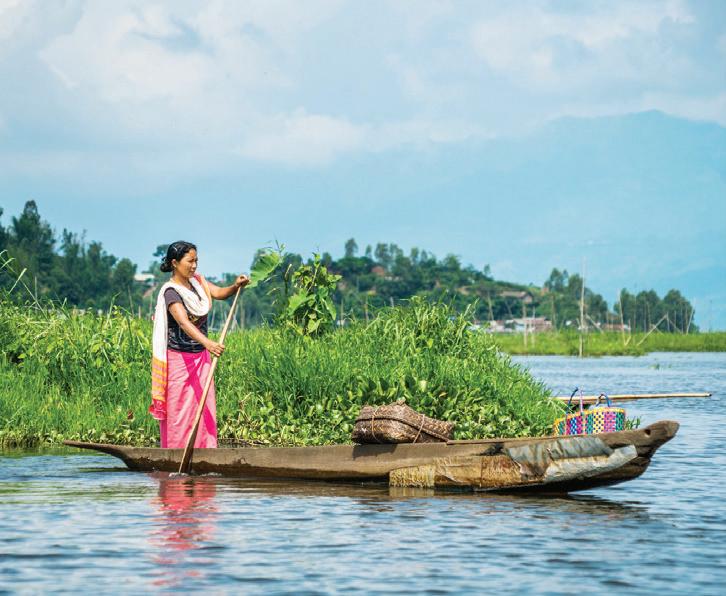
Manipur often referred to as ‘The Jewel of India’, part of the seven sister states of the northeast of India, a state cascading in lakes, streams and evergreen woods. A multilingual state inhabited by thirty-eight communities, of which thirty-five are tribal semantic. Inheriting its rich cultural heritage over 2,500 years connecting the Indian subcontinent to Southeast Asia. Formally called as Kangleipak translating to Dry Land, it was once believed to be underwater.
Manipur is a destination in itself. Everywhere you go, there is a piece of history floating manoeuvring tradition into modernity. The valley consists of 41% practising Hinduism, mainly adornment of worshipping Radha Krishna together known as Vaishnavism, thus giving birth to its traditional Ras Lila dance Khamba Thoibi. The other majority practising religion is Christianity and thus blending with the rich tribal culture giving birth to its unique cuisine, Kangshoi (vegetable stew) a popular dish prepared with seasonal produce. This amalgamation of culture and diversity also gives rise to festivity, especially its famous festival ‘Yaosang’ celebrated for five days encompassing a slice of heaven on earth. Manipur is a spot where vacationers can’t prevent themselves from visiting, being one of the must-visit travellers’ goals in India. As a result the state has been flourishing with tourists and sports enthusiasts who get to enjoy different activities. One can take its pick from Loktak Lake in Imphal, shops in the Tamu International Market in Moreh, or a visit to the Keibul Lamjao National Park in Bishnupur, a place in the tourist dictionary often known as the drifting public park on the planet.
The astounding beauty of Manipur with its charming hills, nestled under a pillow of clouds, is often compared to Switzerland and sometimes regarded as ‘The Switzerland of India. The ancient city of Imphal, capital of Manipur was once a major victory over the Japanese in 1944 by the Anglo Indian, a game-changer in the British recuperation of Burma. Apart from its scenic landscapes the city is also famous for its Kangla fort and its museums. There’s a saying that every spot in Manipur is a travel destination, let me take you to some of its famous spots adored by locals and also by tourists including Ema Keithel (Mother’s Market) in Imphal is one of a kind market single-handedly run by women; from fruits to jewellery whatever you fancy you are bound to find. If shopping is not your thing, you can certainly visit Red Hill Lokpaching in Bishnupur district, tucked away sixteen kilometres from Imphal. It is the very place where the British and the Japanese soldiers fought fiercely during the second world war. It is also the most visited place in India by Japanese tourists. There’s another incredible must-visit place while you are in Manipur, it is the Sekta village, ‘The Sekta Archeological Living Museum’. This site was excavated during the nineties, unearthing the mysteries of the Meitei tribes, one of the early dwellers of ethnic groups in Manipur. Also in Bishnupur is the Keibul Lamjao National Park, the only floating park in the world and is an important part of the Loktak lake. Loktak lake is a freshwater lake that is renowned for its various Phumdis, which are series of floating islands giving an impression of drifting bogs. Khonghampat Orchidarium is a paradise for orchids, it makes you feel as if you are in another world with more than a hundred varieties of orchid blooming, especially in the month of April and May.
The mesmerising Kachou Phung Lake, situated on the slopes of Achuwa Magi hills,
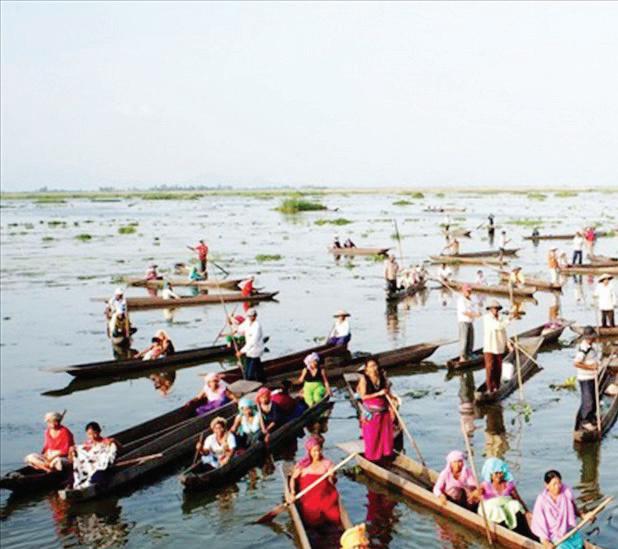
is enough to transport the soul to another dimension. At the same time, the Hundung Mangva Cave or the limestone cave in the Ukhrul district is equally as captivating as its Nillai Tea Estate. Ango Ching also in Ukhrul should be on top of the travel attraction list to visit. Other than these, shopping in Manipur is about ornamenting handlooms, nearby craftsmanship which tourists can purchase at the Khwairamband Bazar, Handloom House, Tribal Emporium, Sangai Handloom and many classic neighbourhood markets. During the ‘90s, Manipur was the fourth largest handloom state in India and the most beautiful feature of this industry that all the weavers are women. Tribal shawls weaved with exotic designs and motifs, making this a valuable handmade export and local purchase. Today major handloom production is undertaken by the government of Manipur.
As for the sports-lovers, Manipur is known for its sporting talents, especially in the field of boxing, football, archery, mixed martial arts along with traditional games like Mukna, MuknaKangjei, Kang Sanaba, Thang Ta, SaritSara and YubiLakpi.
In fact, Manipur is the birthplace of what we know as Polo, but the original Sagol Kangjei (Manipuri Polo) is still very dear to the people in Manipur. The Manipuri Polo is played with seven players (on each side) who mount and ride ponies, which are usually 4/5 feet in height. Each player is fitted with a polo-stick made of bamboo root.
The list of places to visit and things to do is endless. It comes with its own uniqueness and it is hard to jot down and memorise everything. It’s an experience within an experience, you just have to be there to feel the warmth of its rich culture and its people. The best month to visit Manipur is in April. Holidaymakers can capitalise on enjoying Manipuri people celebrating their New Year ‘Cheiraoba’, worshipping Sanamahi, a local deity, with a dance celebration displaying different dance structures like Krishna Raasleela.
Manipur in many ways is God’s poetry for its fragile artistic expressions as if intricately woven into nature. The serenity and it’s beauty makes it an absolute ‘must ‘visit place in northeast India and a city that should add to your bucket list - almost naturally. The list of places to visit and things to do is endless, it comes with its uniqueness, and it is hard to jot down and memorise everything. It’s an experience within an experience, you just have to be there to feel the warmth of its rich culture and its people. Make Manipur your next trip!
VISIT RULE
Foreigners visiting Manipur need to register at the CID office in Imphal. Foreigners visiting Manipur by road from Nagaland may register at the Mao Gate check post for an immigration check. Foreigners visiting Manipur by air need to register at the immigration counter located at the Bir Tikendrajit International Airport in Imphal.

PLACES TO VISIT
Imphal - The capital city
Surrounded by seven hill ranges, the capital city of Manipur is the hub for culture and commercial activity.
Khwairamband bazaar
You get a glimpse into the matriarchal set up of Manipur at this bazaar. Known as 'Ema Keithel', it is the only and the largest market run by women in the country. From here you can pick up traditional Manipuri handloom products such as shawls, baskets, bags, clothes, household tools, and many more. Tourists popularly buy cane and bamboo handicraft from here.
Shri Govindajee Temple
Adjacent to the palace of the former rulers of Manipur, this temple is a sacred centre for Vaisnavites. The temple has a simple structure comprising twin domes, a paved courtyard and a large raised congregation hall.
Gambhir Singh shopping complex
Wondering where to find those shoes and shirts worn by rock stars? Well, this is the right place to buy them from. The place is flooded with latest foreign fashion accessories. Also look out for tattoo shops; the tattoo artists here are quite creative.
(GDI)

Camaraderie of Life and Arts – A Shishya’s Perspective
BY
SANCHITA ABROL
‘Kanyadaan’ a Hindu wedding ritual that carries a deep sentimental significance, is performed by the father of the bride, wherein, he entrusts his daughter to the love of her life. This tradition of taking the fathers hand and placing the grooms on the brides is symbolic of the ‘passing’.
It is similar in significance to the moment when the church doors open and father and daughter make a grand entrance for a Christian wedding. The bride accompanied by her father walk down the aisle and the father gives his daughter’s hand to the groom.
Concurrently, we have the Guru-Shishya

Parampara (teacher-disciple lineage), denoting a genuine relationship between a teacher and the disciples as per Indian culture and many religions like Hinduism, Buddhism, Sikhism and Jainism. As world teachers’ day is around the corner, we look at this ever-evolving relationship in our arts field.
Guru-Shishya Parampara is the tradition of spiritual association and mentoring where knowledge of a specific subject, whether music, dance, drama, vedic, martial arts, architectural or spiritual subjects, are ‘passed on’ from a Guru (teacher) to a Shishya (disciple). To some extent it is similar to the modern times mentor and mentee relationship, albeit entailing an unfathomable emotional and spiritual engagement. As per the ancient scriptures, Guru is considered as the remover of darkness, the bestower of light.
This profound bond between the Guru and Shishya sometimes can even become more empowering than all other relations that a humanoid can endure in a lifetime.
As Aristotle says, “those who educate children well are more to be honoured than they who produce them; for these only gave them life, those the art of living well”.
In modern days, this Guru-Shishya Parampara has become more refreshing when a Guru can even be your friend, sharing and celebrating life, and also your last resort in times of need. Yet the purity of this relation is still upheld as the highest order.
No matter what time and era we belong, this relationship is truly based on the genuineness of the Guru and the commitment, devotion and obedience of the disciple for carrying forward the knowledge received. Under the tutelage of the most respected Gurus, many disciples reach the advanced stage and some even become the subsumed Gurus under the hierarchy of the tree of knowledge.
In the Indian classical dance field, we have a deep-seated Guru-Shishya Parampara undulating from one generation to another. Following the years of hard work and long rehearsals, many disciples even reach the advanced stage and culminate with the ‘Rang Manch Pravesh’ or ‘Arangetram’. These are the substitute names given to the debut on-stage recital of a senior Indian classical dance and music student.
It is seen as the moment of pride for the Guru, Shishya as well as the whole family. Especially as recently seen, the Rang Manch Pravesh and the Arangetram have become a fancy feast for the whole crowd. However, lately this is being seen as the end of the learning cycle.
If marking the end of the learning is not enough, this Guru-Shishya relation becomes more strenuous when it converges with the Kanyadaan. Or, as I call this convergence the ‘Shishyadaan’, a point where a Guru is willing to entrust his/her most precious disciple, to another person, hoping that the person will love, respect and support the Shishya’s artistic journey. It is an emotional and sentiment-laden phase, where a Shishya walks away with all the knowledge that has been received over the years.
At this stage, the disciple promises to carry forward the knowledge. Nevertheless, after this convergence, the real challenge begins. New responsibilities in life, whilst a Shishya steps away from a Guru’s nest into a very competitive arts industry, demands hard work. At times, this split in the rhythm of life and profession can be felt more than others in an artist’s life.
To be clear, what is natural to you may not be the universal way, it may even be an unheard path. However, being an artist does not mean you are always expected to go against the current of life. There are infinite possibilities to surrender and experience life and its pleasures. Some may even believe that the more you resist your natural current of life, the more you confine your creative expression and Rasas.
I believe, no matter in what form or shape, but surrendering yourself to your hearts will always open the doors. This surrendering may come with resistance from within, but welcoming your thoughts effusively is what we can do the finest. Rather, as you practice this unfolding, you may be able to move to the expansive freedom within the creative expression.
More precisely, there isn’t a right or a wrong way to live arts and breathe life. Life and arts may imbue each other or one may overpower the strings of other at certain times. But the balance that you can maintain counts. You purely need to honour the commitment you made as an artist to love your life copiously as you appreciate your heart path, with ease, delight and abundance. Remember that the Rang Manch Pravesh or Arangetram, as the names suggest are ‘the entry on the stage as an artist’. Like a wedding they symbolise a new beginning and passing. We as the Shishyas can just bow to our Gurus and evoke, ‘knowledge is of no value unless put to practice’. In fact, this may be the biggest offering to ourselves and the Gurus in our life.
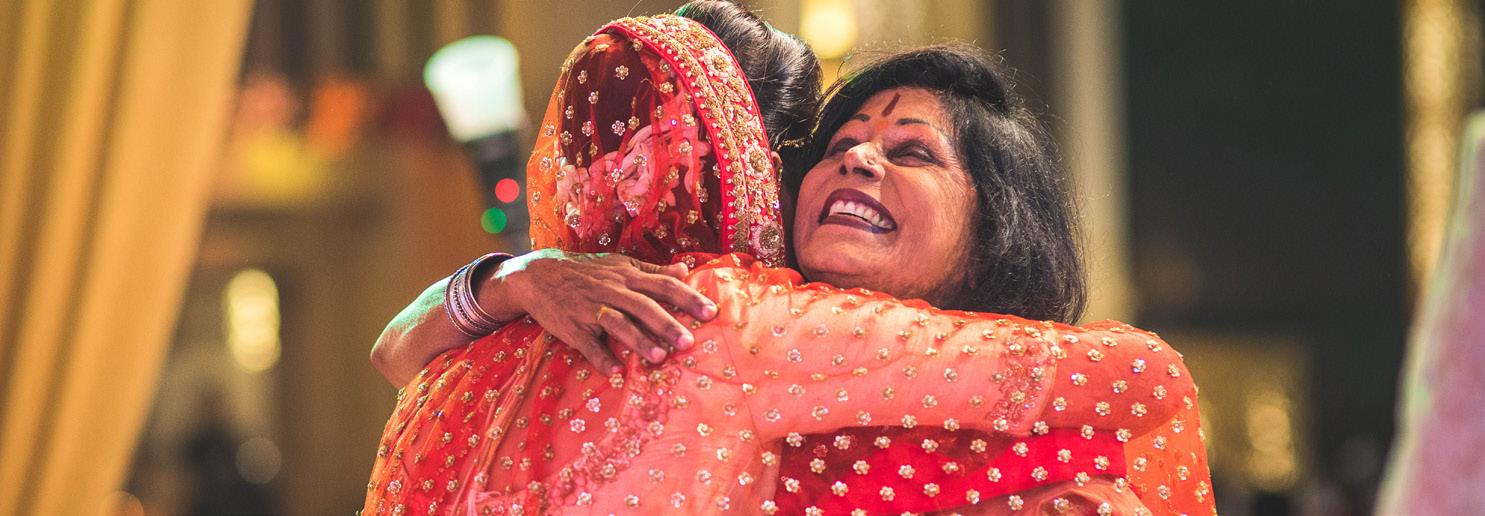

5 STEPS TO SOFT & HAPPY SKIN
Achieving soft, beautiful and happy skin is a dream for most of us or at least a long-pending item on our wish list. While there are lot of suggestions, a laundry list of do’s and don’ts to follow, there are some basics that don’t change. We have to understand that happy skin is a holistic process that requires one to work on building healthy habits combined with good skincare.
Here’s a ready reckoner by ITC Fiama of tried and tested skincare habits that will serve as a reminder that skincare doesn’t need to be complicated, it just needs to be consistent.
Cleanse & Moisturise -- The first and the simplest step towards healthy skin is regular cleansing and moisturising, it is advisable to use a moisturizing body soap that ensures your skin gets the right nutrients and remains supple and nourished. A great product suited to this requirement is Fiama Gel Bathing Bar, which is enriched with nature’s goodness. Fiama’s bathing bars come in 5 variants, and they help moisturize the skin making it appear soft, happy and bouncy.

Balanced Diet -- Healthy skin is an outcome of a balanced diet. The food we eat provides the building blocks for healthy functioning of our bodies. Our diet has everything to do with the health of our skin. The nutrients, minerals, and proteins found in food support collagen production and healthy cell membranes, and protect skin from harmful stressors, such as UV exposure. develop a healthier complexion alternately it also leaves you stress free making you look happy and radiant.

Drink Enough H20 --
With our bodies comprising of 70 per cent water, drinking sufficient amount of water is the easiest way to keep your skin healthy and hydrated. Drinking adequate water helps flush out toxins from our bodies, preventing pimples and acne and boosting the skin’s elasticity. No wonder, water is called the elixir of life.
Move Your Body -- Along with cleansing and proper nutrition, another aspect which is important for happy skin is movement. When we move or burn calories, the body produces chemicals called endorphins. These endorphins interact with the receptors in the brain and trigger positive feelings and happy thoughts. This feeling of pure happiness and joy reflects on the skin, thus having the power to completely change your mood and keep you and your skin beaming.
Smile -- While most of us hate the idea of having crow’s eyes and lines while we smile. We rarely realize the benefits of a simple smile. When we smile the blood flow gets better, and the skin receives more oxygen and nutrients. This can help you
(IANSlife)
HELP YOUR KIDS COPE WITH STRESS
In comparison to adults, children are prone to getting traumatized by troubling events easily, and this makes it important for parents to help their children when the times are tough.
It could be a brutal accident, an unprecedented pandemic, a violent crime, or other disasters but with the right parental support, children have a higher chance of coming out stronger from an awful situation.
Anuja Kapur, Psychologist shares few tips wherein you can assist your child when tough times comes calling:
Every child responds differently to disturbing events: What children feel about a current disaster in their life and how they react to it can come and go in waves. Children can act moody and withdrawn at times, struck with sorrow and fear at other times. There’s no absolute “right” or “wrong” way to feel after a traumatic event so make sure not to dictate what your child or how your child should feel and react to the event.
Encourage your child to be transparent: Just make sure you let your child know that whatever feelings they’re experiencing is normal. The unpleasantness will pass if your child opens up about it and that the phase is temporary. While many teens may be reluctant to talk about their feelings with a parent, encourage them to confide in another trusted adult such as a family friend, relative, or a counsellor and teacher. It’s important to take even if it’s not with you.
Deter your child from reliving the disturbing event: Dwelling over, watching the footage, or imagining the event can be overwhelmingly stressful for children and this stress can even block their nervous system. However, to negate such things from happening encourage activities that keep your child’s mind occupied so they’re not obsessive about the event. You could encourage your children to read, play games together, or simply watch an uplifting movie.

Cocoon your child with warmth. In order to reassure your child that they are safe with you and feel secure, that the worst is over your physical affection is important in making them feel safe again. Teens may try to be tough through it and avoid being held, but they still need the proximity.
Maintain routines. Establishing a predictable structure and schedule for your child’s life can help to make the world seem more stable again. Try to maintain regular times for meals, homework, and family activities. Make sure your child accommodates time and space for rest, play, and fun. Keeping up with a schedule can help countercheck the obnoxious feeling of stress and worry in children about the future being dark, hopeless, and unpredictable.
Acknowledge and validate your child’s concerns. The disastrous events in life may give place to unrelated fright and concerns in your child. However, understanding and accepting your child’s present state is a comfort for the child. If at any point the child blames himself for the event make sure to make it clear and crisp the event was not their fault, you love them, and it’s okay for them to feel upset, angry, or scared but not guilty.
Irrespective of the age of your child, it is vital for parents to offer that extra support and assistance following an unsettling event. The traumatic event may bring up unrelated fears and issues in your child. However, by accepting their thoughts and replacing their fear with your love and direction, the ominous feelings will start to fade away. Eventually, the child will be able to return to a normal and healthy life.
(IANSlife)




